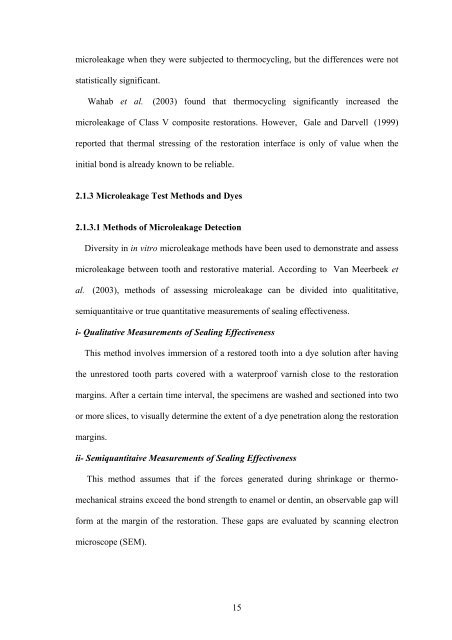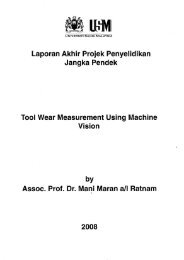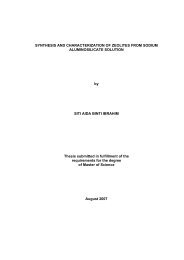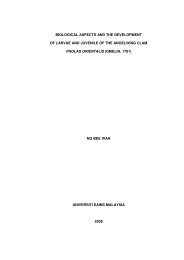microleakage in class ii composite restorations ... - ePrints@USM
microleakage in class ii composite restorations ... - ePrints@USM
microleakage in class ii composite restorations ... - ePrints@USM
Create successful ePaper yourself
Turn your PDF publications into a flip-book with our unique Google optimized e-Paper software.
<strong>microleakage</strong> when they were subjected to thermocycl<strong>in</strong>g, but the differences were notstatistically significant.(Wahab et al., (2003) found that thermocycl<strong>in</strong>g significantly <strong>in</strong>creased the<strong>microleakage</strong> of Class V <strong>composite</strong> <strong>restorations</strong>. However, (Gale and Darvell, (1999)reported that thermal stress<strong>in</strong>g of the restoration <strong>in</strong>terface is only of value when the<strong>in</strong>itial bond is already known to be reliable.2.1.3 Microleakage Test Methods and Dyes2.1.3.1 Methods of Microleakage DetectionDiversity <strong>in</strong> <strong>in</strong> vitro <strong>microleakage</strong> methods have been used to demonstrate and assess<strong>microleakage</strong> between tooth and restorative material. Accord<strong>in</strong>g to (Van Meerbeek etal., (2003), methods of assess<strong>in</strong>g <strong>microleakage</strong> can be divided <strong>in</strong>to qualititative,semiquantitaive or true quantitative measurements of seal<strong>in</strong>g effectiveness.i- Qualitative Measurements of Seal<strong>in</strong>g EffectivenessThis method <strong>in</strong>volves immersion of a restored tooth <strong>in</strong>to a dye solution after hav<strong>in</strong>gthe unrestored tooth parts covered with a waterproof varnish close to the restorationmarg<strong>in</strong>s. After a certa<strong>in</strong> time <strong>in</strong>terval, the specimens are washed and sectioned <strong>in</strong>to twoor more slices, to visually determ<strong>in</strong>e the extent of a dye penetration along the restorationmarg<strong>in</strong>s.<strong>ii</strong>- Semiquantitaive Measurements of Seal<strong>in</strong>g EffectivenessThis method assumes that if the forces generated dur<strong>in</strong>g shr<strong>in</strong>kage or thermomechanicalstra<strong>in</strong>s exceed the bond strength to enamel or dent<strong>in</strong>, an observable gap willform at the marg<strong>in</strong> of the restoration. These gaps are evaluated by scann<strong>in</strong>g electronmicroscope (SEM).15
















